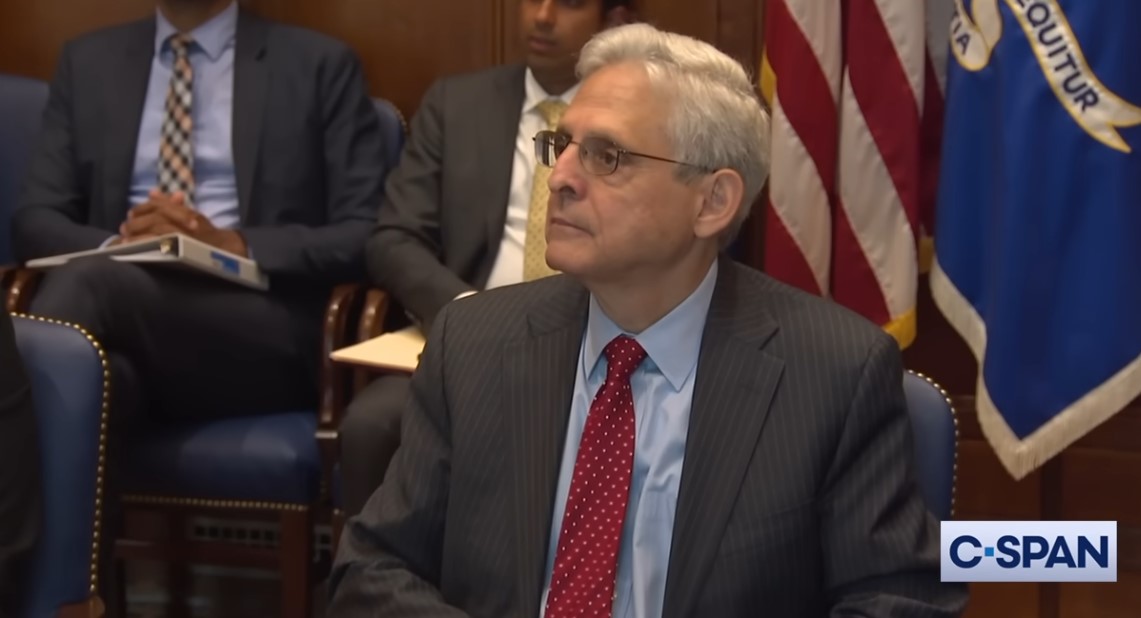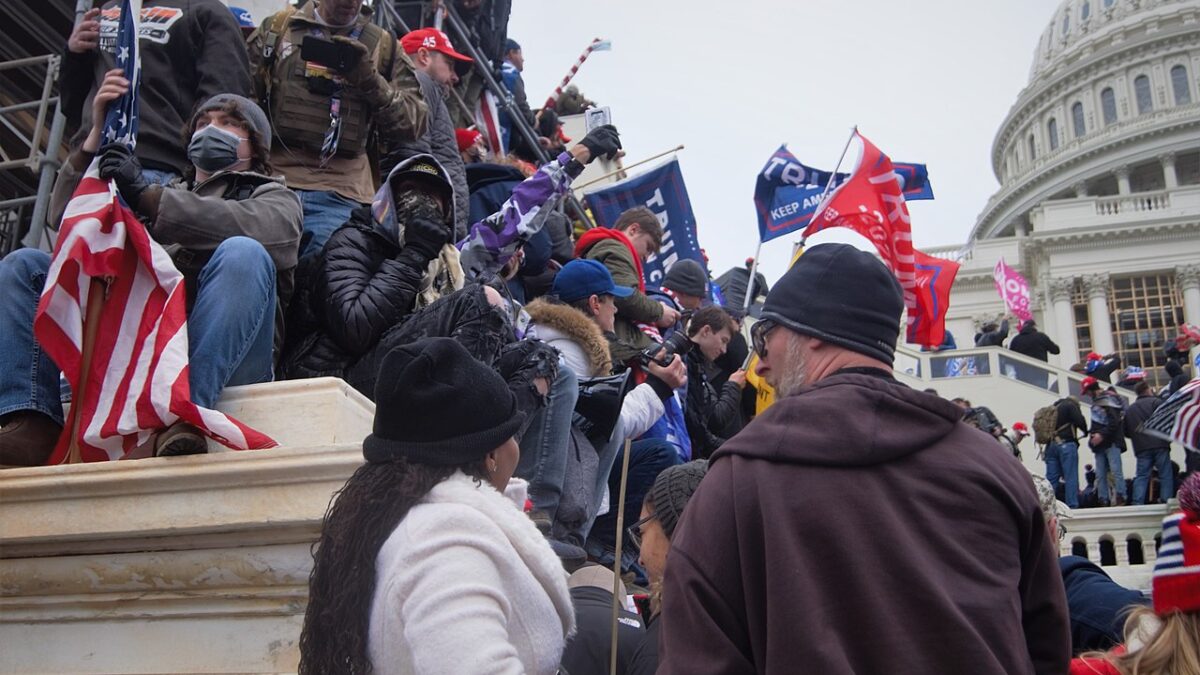Attorney General Merrick Garland recently remarked that “no person is above the law in this country.” Yet, based on the recent actions taken by the Department of Justice (DOJ) under the attorney general’s leadership, some organizations are, including Garland’s DOJ.
In March 2021, an investigation launched by the Foundation for Government Accountability (FGA) revealed an unprecedented scheme underway by the Biden administration to use federal agencies and their offices located in the states as a get-out-the-vote machine for the left — all paid for by taxpayers.
FGA responded with a Freedom of Information Act (FOIA) request demanding copies of the agencies’ plans to carry out the president’s order as well as communications between Biden’s political appointees and the radical left-wing group that dreamed up the plan, Demos. Demos is now stationed inside the White House to carry out its original plan.
But DOJ stonewalled FGA’s FOIA request for a year. With midterm elections quickly approaching, FGA sued DOJ in federal court, demanding it hand over the documents it is required to produce under federal law. After all, FGA agrees that no one should be above the law, including DOJ.
This past July, DOJ filed a court document claiming it had located approximately 5,500 records that could be responsive to FGA’s FOIA request. Based on that large volume of records, DOJ claimed the soonest it could turn over the documents to FGA was next year. Forcing DOJ to return documents any sooner than that, attorneys for DOJ bemoaned, would “put an undue strain on agency resources.”
But FGA fought back in court against this attempt to delay the release of the records and won. Refusing to buy DOJ’s argument, the federal judge ordered the documents to be produced before the midterm elections.
On September 8, DOJ provided several documents and emails, but the volume was noticeably smaller than what DOJ had initially described when it sought the lengthy delay for production. Rather than 5,500 records, it was a mere 135 pages and most were heavily redacted.
Even more troubling was DOJ’s refusal to turn over a 15-page strategic plan FGA requested through FOIA, claiming the plan is protected by the deliberative-process privilege and the presidential-communications privilege. This is a dubious claim since the strategic plan is a finished (post-decisional) product, a copy of which was merely forwarded to the White House.
So neither of these two privileges attach, because they are designed to protect a president’s ability to make decisions with the help of candid input from his advisors. This document was a copy of the final plan DOJ was carrying out, not a pre-decisional document.
This gives FGA firm legal footing to fight back against this effort to hide the plan from the American people, including the 36 members of Congress led by Republican Rep. Ted Budd who have demanded to see it.
This is a fight FGA will proudly and aggressively engage in as promoting government accountability is at the heart of everything FGA does, but the fact that his fight must be fought at all is deeply troubling. Clearly, individual citizens and groups lacking the legal resources of FGA could never get their hands on documents even though the law is supposed to guarantee them that right. This fight is about more than just obtaining the information needed to stop this scheme, it is about forcing the federal government to follow federal law.
However, there is a silver lining. Whether or not FGA prevails in court, forcing DOJ to disclose this plan to the American people, Congress now knows with certainty that the document exists, and if the midterm elections go in favor of Republicans as most are projecting, oversight committees led by Republicans rather than Democrats should have little trouble securing a copy of the plan themselves in November.
But all this begs a simple question: if the plans really are about “promoting access to voting,” as the president has claimed, then why not share them with the American people? Why keep the plans secret?
Importantly, even the handful of documents DOJ did disclose included an interesting revelation. In July 2021, the White House convened a “listening session” between federal agency heads and a select group of left-leaning voter organizations to allow those organizations to “provide their recommendations and thoughts” on how federal agencies can most effectively carry out Biden’s unprecedented executive order.
According to the documents uncovered by FGA, at least three employees of Demos attended the meeting, with one of them giving a presentation on “Affirmative Opportunities for Voter Registration,” geared toward three specific agencies: HUD, USCIS, and IHS. While we do not yet know all the details on how USCIS and IHS plan to promote this executive order, HUD’s plan to use public housing authorities across the country as voter registration outposts is already well-known thanks to strong investigative reporting by The Daily Signal’s Fred Lucas and the Federalist’s Mollie Hemingway.
HUD’s plan has drawn scathing criticism from members of Congress and several non-partisan groups focused on election integrity. The involvement of Demos in these listening sessions is also troubling but should come as no surprise for those who have been following this story.
As first reported by FGA, it was Demos that originally developed the plan to use federal agencies to engage in voter registration and get-out-the-vote efforts for the left that later became the blueprint for Biden’s EO. And, shortly before the EO was published, the president of Demos and its director of legal strategies were both hired by the Biden White House and placed into key positions to help carry out the order. Demos created this plan, and now they are in the White House carrying it out.
Moving forward, two key dates loom on the horizon.
First, on September 22, DOJ will file a document known as a “Vaughn Index.” This document will provide additional details and justifications for why DOJ believes it is entitled to withhold or redact the documents it has withheld or redacted under one or more of the FOIA exemptions. Shortly thereafter, FGA will file a motion with the court to have the strategic plan disclosed, and possibly more, depending on what is revealed through the Vaughn Index provided by DOJ.
Then, on or about October 20, the judge will issue a final ruling on FGA’s motion, and if FGA prevails, DOJ’s plan will be revealed before the midterm election. If not victorious on that motion, FGA’s court battle against DOJ will continue through other legal strategies.
Through the stonewalling of our initial FOIA request, and now through this latest action, it is clear that the current politically appointed leadership at DOJ, either on its own or more likely at the behest of the White House, is doing everything it can to avoid transparency and compliance with the FOIA law. Why? If there is nothing sinister in the strategic plans, why not share them with the American people?
Rest assured, FGA will not rest until we get an answer to this question and stop this unprecedented scheme. No one is above the law, including DOJ.









